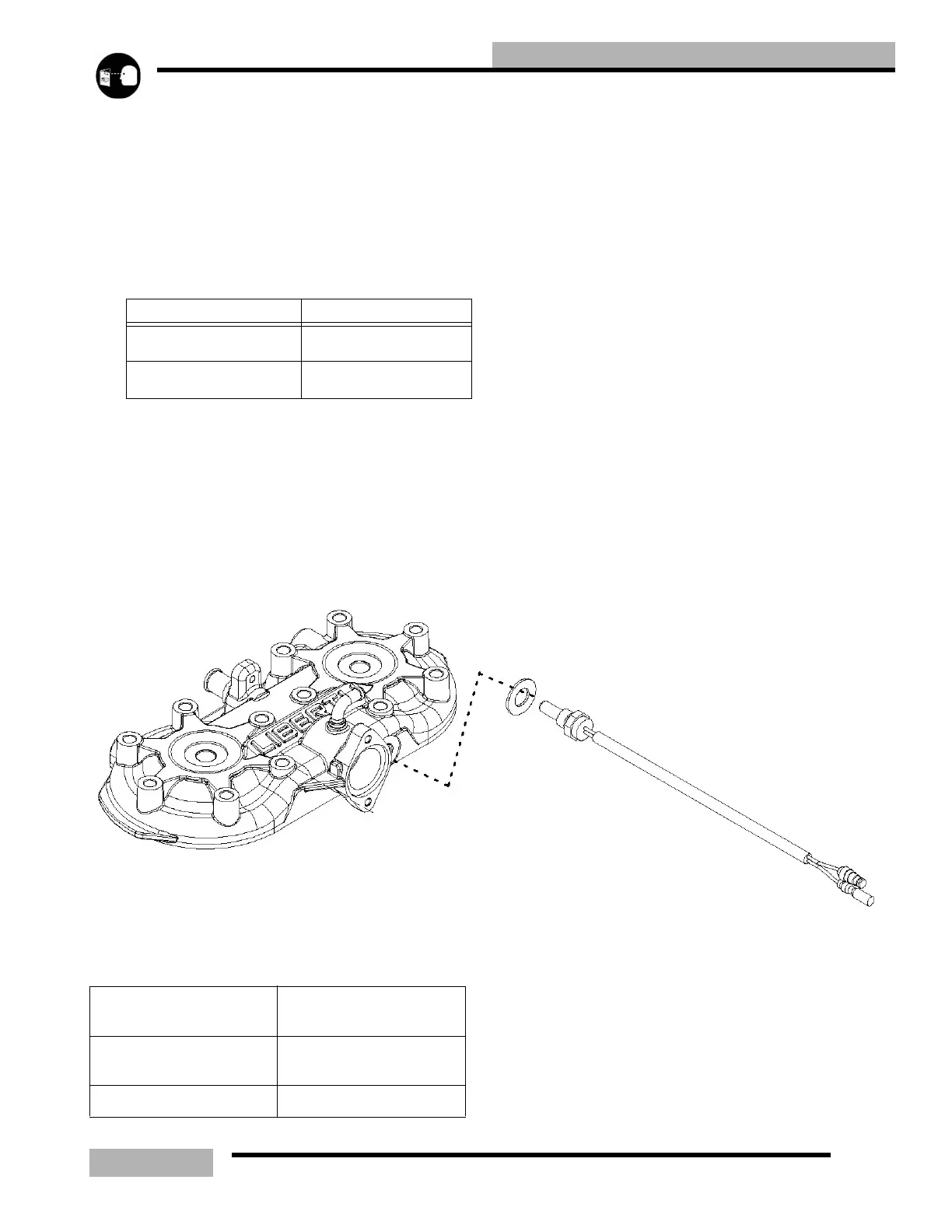13.19
ELECTRICAL
DET TROUBLESHOOTING
Use this chart to determine causes and solutions for
detonation. If none of these conditions exists and the sensor
remains activated you may need to remove the sensor from the
engine and test run the unit, and if the conditions are gone you
will need to check the possible causes again. If the conditions
remain the same you may need to replace the sensor.
EFFECT OF DET
Basic concept of the detonation system is to avoid damage to
the engine from detonation while developing the maximum
power of the engine safely. The system starts with a
predetermined engine perimeters. If the system senses
detonation that is beyond a preset limit, the system retards the
ignition timing to reduce the detonation and prevent engine
damage. When the detonation returns to a permissible level,
the system will incrementally advance the spark to increase the
output of the engine in a safe manner.
SENSOR FAIL SAFE
The Detonation Elimination Technology also includes a sensor
fail-safe system to prevent the engine from damage, when the
sensor has failed, been disconnected or is unable to detect
detonation. DET failure will add 10% injector duration and the
ECU will use other sensors. The rider will experience a loss in
power. The sensor will need to be reconnected or repaired to
once again achieve full power. Check engine light will flash 6
times if the sensor fails or becomes disconnected. The ECU
will default the DET value to a set percentage and will monitor
other sensors for reduced performance.
IQ TEMERATURE SENSOR
Resistive sensor which the resistive characteristics change due
to temperature. The ECU uses engine coolant temperature,
throttle opening and engine RPM information to adjust fuel
and ignition maps to warm up or cool down the engine.
Disconnected or Default temperature is 77.5_F (25_C).
EXHAUST TEMPERATURE SENSOR
K-Type resistive sensor with resistive characteristics that
change due to temperature. The ECU senses this change in
resistance and uses this information to correct fuel and/or
timing. This sensor is difficult to measure if temperature is
Table 13-11: DET Troubleshooting
POSSIBLE CAUSE SOLUTION
Poor quality fuel
Replace with higher
quality fuel
Improper engine
modifications
Do not modify the engine
Table 13-12: IQ Temperature Sensor
Specifications
Operating Temperature
Range
-22_F - +248 _F (-30_C -
120_C)
Resistance
2.4 - 2.6KΩ@ 68_F
(20_C)
Installation Torque 29 ft.lbs. (39.2Nm)

